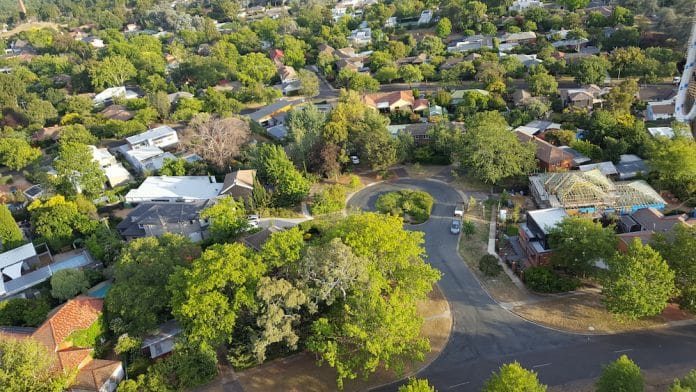The way our contemporary suburbs have been designed is literally making us ill, according to Mike Day, a co-founder and partner at urban planning and design firm, Hatch RobertsDay.
Discouragement of physical activity, isolation and pollution are just some of the factors affecting the health of Australians.
Hatch RobertsDay is a national, award-winning design, planning, and placemaking practice with studios in Canberra, Brisbane, Sydney, Melbourne and Perth.
In their work around the country, they have found for the past 20 years Australian suburbs have become increasingly car dependent, dominated by separated land uses and streets with limited access for pedestrians.
Combined with the impact of the COVID-19 pandemic, Mr Day says it’s not surprising that loneliness and social isolation have increased.
“Many people feel marooned in these suburbs where their daily needs are not within walking distance – and it’s having a dramatic impact on people’s mental and physical health,” he says.
“Most suburban town planning not only separates land uses and people from each other, it has tended to discourage physical activity with a lack of cycle paths or connected walkways, leading to rising rates of obesity.”
According to the Australian Institute of Health and Welfare, in inner and outer regional areas the number of Australians aged 18 and over who are overweight or obese has risen to 70% in recent years. This statistic is higher than for those living in the cities, but Mr Day argues it doesn’t have to be like this.
Implementing urban design and place strategies that offer alternative, more sustainable forms of transport such as walking along dedicated footpaths, e-bikes, push bikes and public transport options not only helps bring people together, but it also reduces congestion and pollution, and is less expensive than building roads solely for cars.
“It’s an urban design and health and wellbeing strategy that gives people the option to meet their daily needs within a 20-minute return walk from home, with access to safe cycling and local transport choices,” he said.
“The policy promotes sustainable transport, mixed-use, the UN Sustainability Goals and local workplaces.”
Mr Day says the young, teenagers and elderly are particularly hard hit by poorly planned neighbourhoods that cut them off from their peers. Added to this is a lack of jobs or job creation initiatives in suburban areas that force people to commute long distances to work, compounding their stress and exhaustion.
“We need to emulate what our forebears have laid out and design places that are akin to those cherished, timeless inner-city neighbourhoods,” he says.
“Places that are compact and intimate, with a diversity of spaces that encourage and promote an inclusive community – we need to urbanise the burbs.”
Tips for creating suburban towns that prioritise health and wellbeing
- Walkable environments that reduce the need for cars.
- Separate cycle pathways and connected walkways.
- Micro-mobility such as e-bikes and scooters.
- Public transport options including buses and trams.
- Town or village squares located within walking distance of most residences provide a sense of place and belonging.
- Parks and other green spaces such as community gardens and rooftop gardens.
- Tree-lined streets with wide footpaths and cars accommodated at the rear of houses.
- Mix of housing options such as terraces and townhouses to encourage a multi-generational population.
- Increased vertical density and mixed-use amenities such as schools, community centres, leisure centres and shops.
- A variety of curated community events and programs.
For more:









